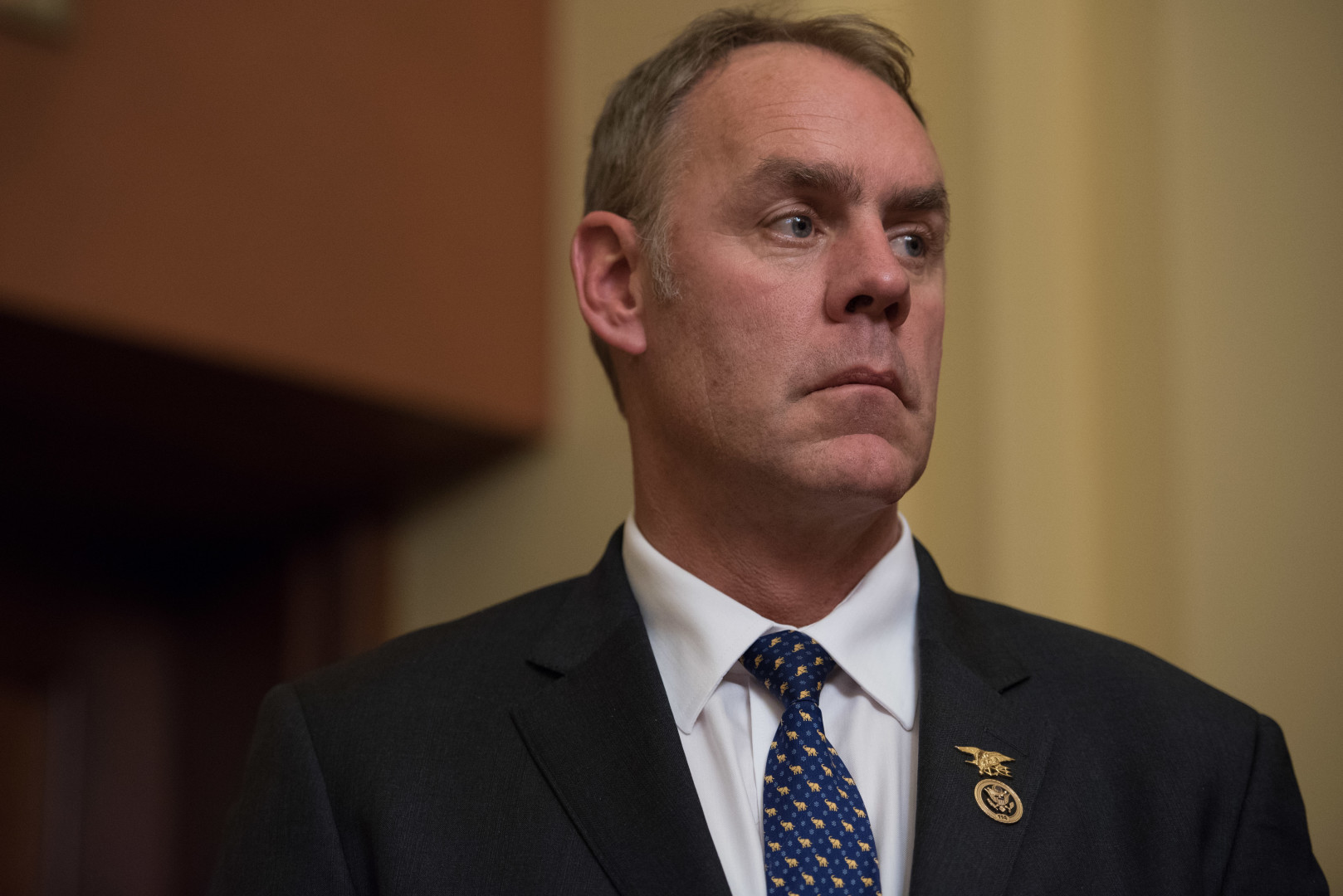April 26, 2017 at 3:30 pm ET
- Share on Facebook
- Share on Twitter
- Share on LinkedIn
- E-mail to a friend



President Donald Trump and Interior Secretary Ryan Zinke sent conflicting messages about an executive order on national monuments that was signed Wednesday.
Trump said at a signing ceremony the order will “end another egregious abuse of federal power” and “give that power back to the states and to the people where it belongs,” referring to the Antiquities Act, a 1906 law that allows the president to unilaterally create national monuments, with no limit on the size of the designation. Trump reiterated: “Today, we are putting states back in charge.”
But the executive order itself only calls for a review of national monuments created from 1996 onward that are larger than 100,000 acres. Zinke said during a conference call with reporters on Tuesday that the review “doesn’t presuppose any action.”
Spokeswomen for the White House and the Department of the Interior did not respond to a request for comment on the discrepancy on Wednesday.
Under the order, after 45 days Zinke is meant to produce an interim report focused on the controversial Bears Ears National Monument that former President Barack Obama created in December 2016. The monument is at the center of the debate over the broad power given to the president under the Antiquities Act. Trump thanked Utah Sens. Orrin Hatch (R) and Mike Lee (R) for their “never-ending prodding” on the executive order.
After 120 days, Zinke will produce a final report including any recommendations for changes to the boundaries of monuments or legislative changes to the Antiquities Act.
“This executive order simply initiates a review,” Zinke said, adding that anything more could lead the administration into rough legal waters. While the president has the authority to alter the boundaries of monuments, Zinke said whether a president can actually revoke a monument designation is “untested.”
Some conservationists believe even the current order goes too far. In an interview, Aaron Weiss, spokesman for the Center for Western Priorities, said the Antiquities Act is a “one-way law,” allowing presidents to create and expand monuments but giving only Congress the power to revoke or shrink them.
Trump’s stance that the administration will put states “in charge” may also conflict with Zinke’s promises that he will not support the transfer or sale of federal lands to states or private interests. Zinke made the promise in his confirmation hearing in January and said Tuesday that he stands by it. He referenced the late conservationist President Theodore Roosevelt three times in Tuesday’s call with reporters and twice at Wednesday’s signing ceremony.
Revoking a monument designation does not mean the federal government would stop managing the lands, Zinke said. Rather, the move would keep the lands under the federal government’s control but allow for more activities, including “grazing, fishing, mining, multiple use, and even outdoor recreation,” he said at Wednesday’s signing ceremony.
The exact scope of the review is also unclear. Zinke said on Tuesday that the review would cover between 24 and 40 monuments over 100,000 acres created since 1996. But the executive order itself also calls on Interior to review monuments “where the Secretary determines that the designation or expansion was made without adequate public outreach and coordination with relevant stakeholders.”
Under the 100,000-acre guideline, the department would not review Maine’s 87,000-acre Katahdin Woods and Waters National Monument, created by Obama in August. But Maine Gov. Paul LePage (R) was in attendance at the signing ceremony.
Citing LePage’s presence, Weiss said he is concerned that the administration will cast a wide net in its review, including Maine’s newest monument.